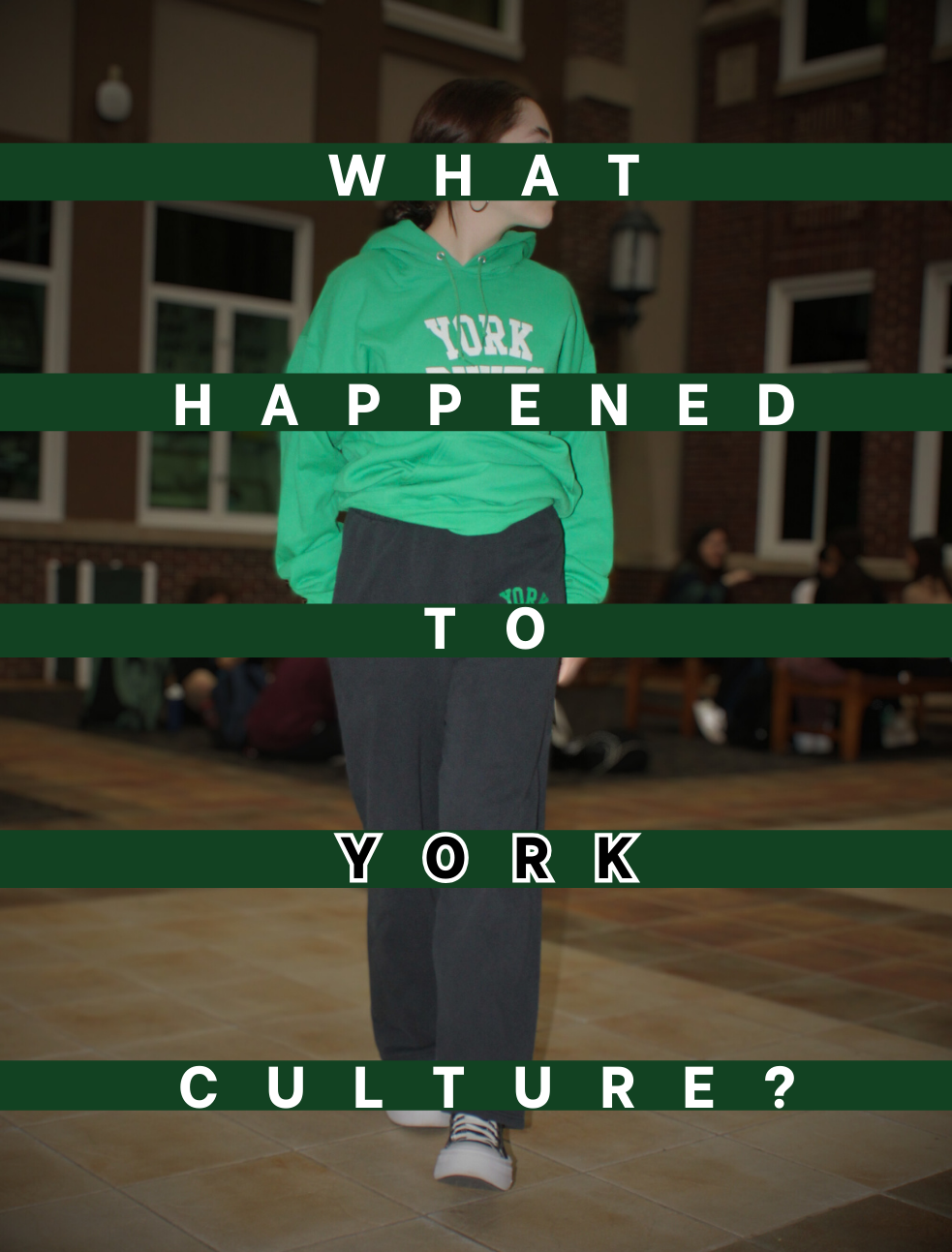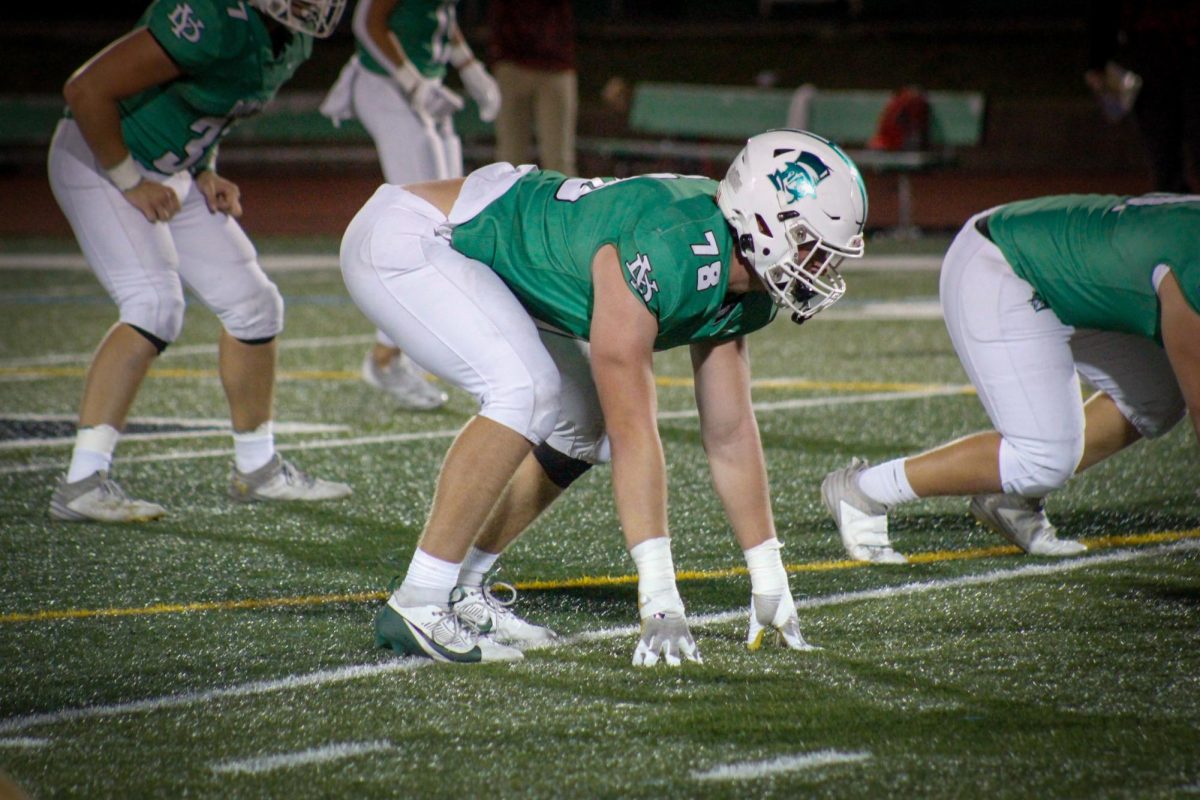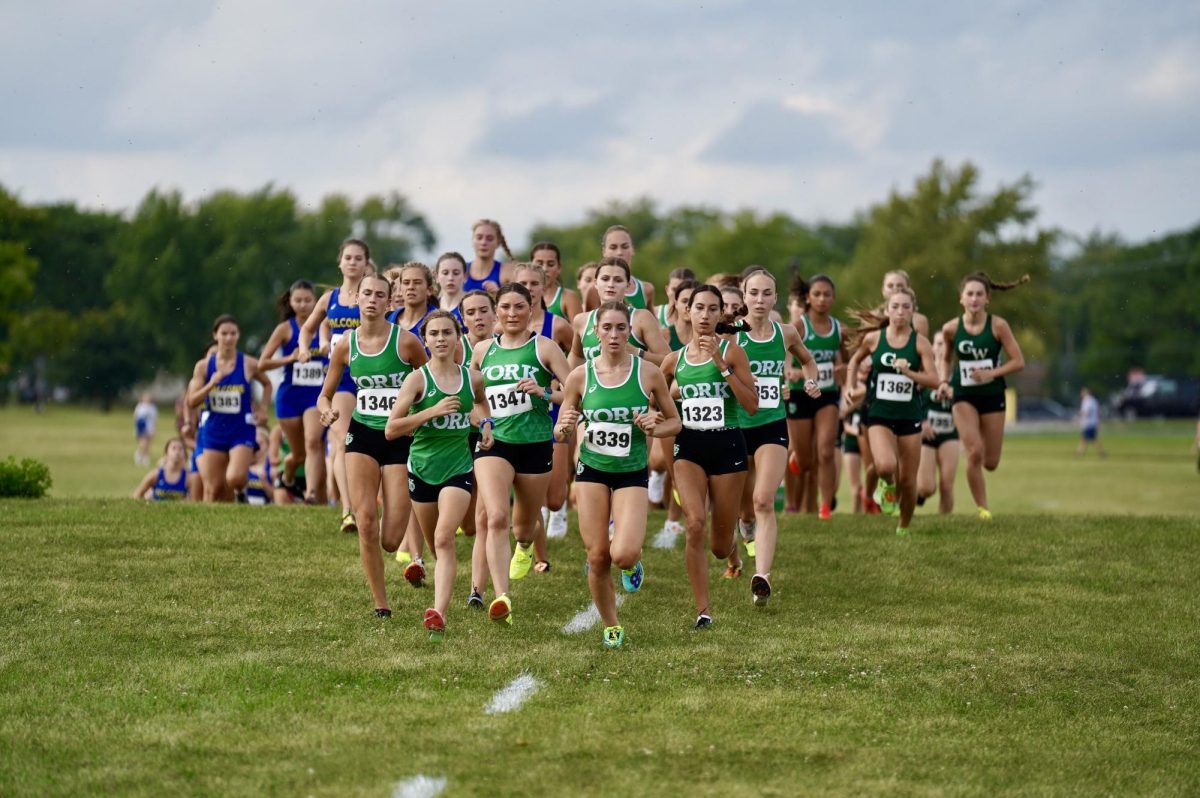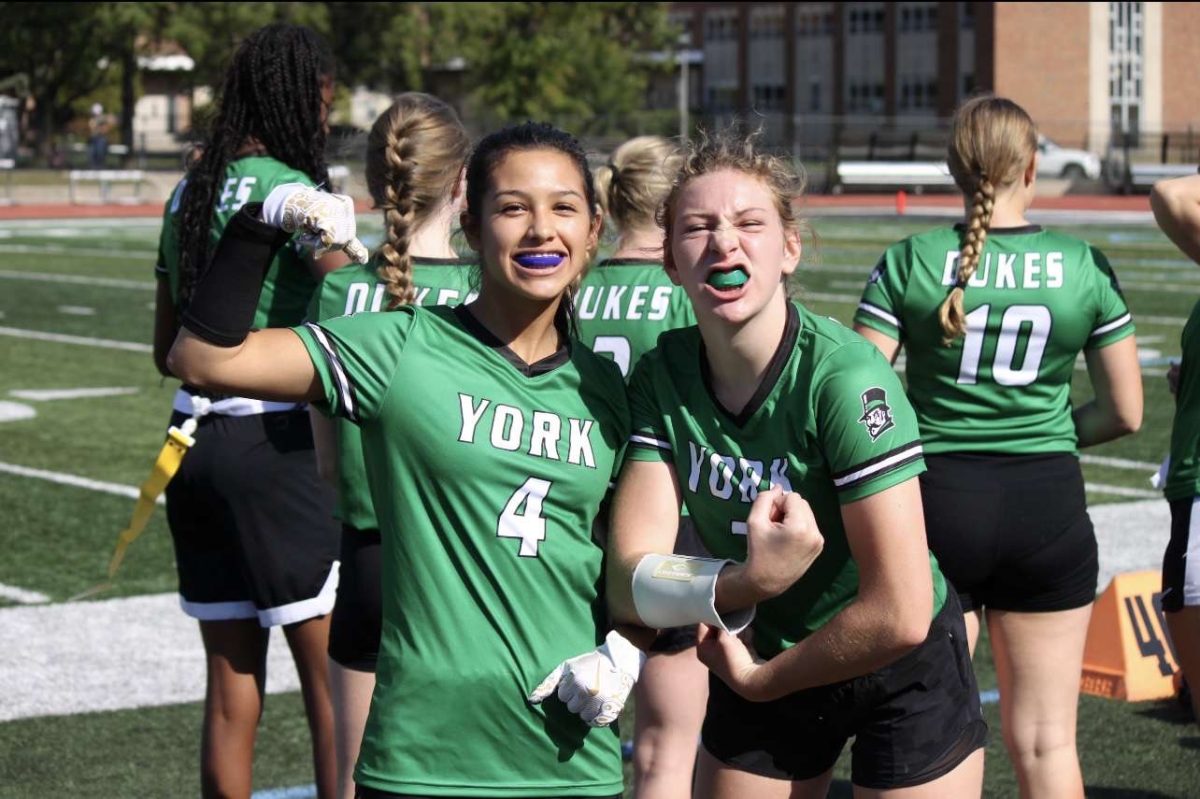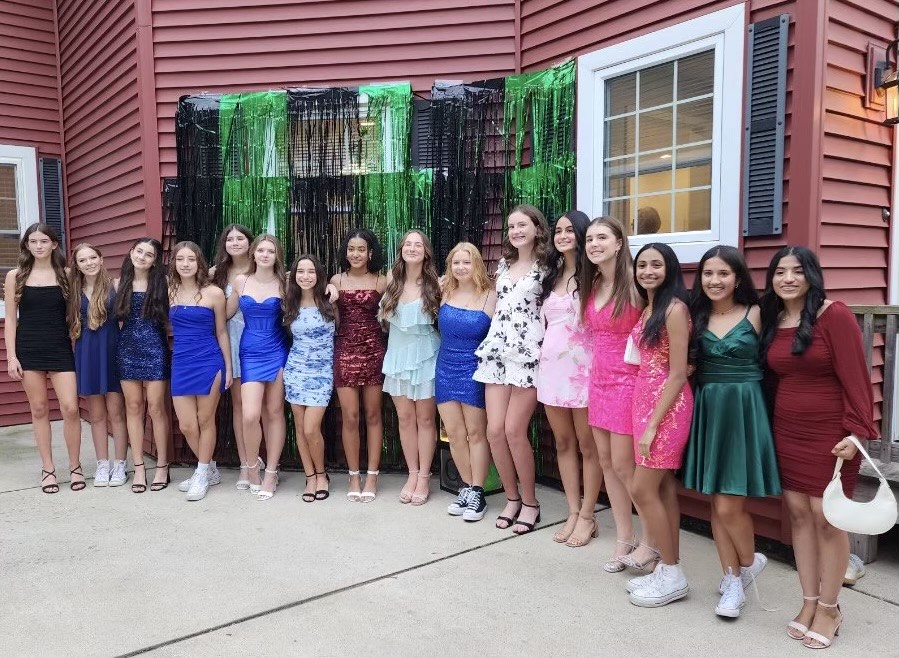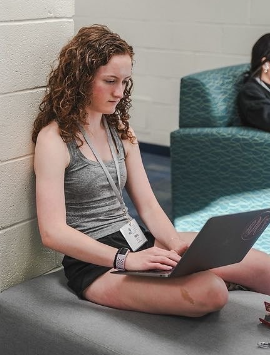Over the years, York has had a reputation for its school spirit, enthusiasm, and comradery.However, today it is up to debate whether or not these traits still hold true.
As of recently, York seems to possess an increasingly tense atmosphere, one that differs greatly from the optimistic and high spirited energy that once carried throughout the hallways. There is a lack of rapport between both students and teachers, and a lack of involvement from students in events and activities. These factors all have led to a deterioration within our culture, which ultimately affects the spirit and pride upheld by students.
“At the beginning of last school year there was a great start,” Kate Krupa, senior, said. “We had a strong football team and a great bond between students. After that settled down, there was a pretty big rise in bullying and ignorance towards staff and towards each other.”
Krupa has pursued many paths that have rendered her a student leader. As membership coordinator for Best Buddies, drumline captain, track captain, and member of the Student Advisory Committee, she has had the chance to experience many different perspectives. While this has allowed her to positively contribute to York’s culture in many ways, it’s also made her more aware of the negative atmosphere.
“I don’t really like coming to school right now,” Krupa said. “It’s just really hostile and gloomy.”
It is also apparent to senior Caroline McEvoy that the increase in bullying has prevented students from staying engaged and participating in school events. When students feel unwelcome, they don’t want to immerse themselves.
“A lot of people that participate in school spirit get bullied,” McEvoy said. “It is not seen as cool as it once was a few years ago.”
While there are an innumerable amount of in-school opportunities, students such as Krupa and McEvoy are all too aware of the conflicts within the building. This is an issue that has been developing over time, as recent alumni agree that the amount of York pride someone has varies on the subgroup or clique they belong to within the school.
“The York culture and York spirit has definitely been targeted towards a select group of students,” Hannah Brody, graduate, said.
In order to understand the cause of this cultural shift, and why some students have more pride than others, students and staff reflected on the importance of school culture in the building.
“Students are here to learn, but there’s research that states that if a student comes into a classroom and that classroom has a culture that they want to be in, they are more apt to learn,” Assistant Principal for Culture and Climate Tim Dykes said.
Dykes is a new administrator this year, but has been teaching, coaching and leading for 23 years. Given his experience, he stands by the ideology that school is an environment made for students and should be orchestrated accordingly.
“In order for learning to take place there has to be a culture that kids want to be in and that staff members want to be in.” Said Dykes.
Engaging students in the classroom is one reason why school culture is a priority to Dykes. It’s also important to recognize the social and emotional benefits that come from promoting a welcoming school environment.
“Having good comradery at York is important to make sure everyone feels included and looks forward to coming to school and school-run events,” Mary Connor, student body president, said.
School spirit is something that Connor values, and that spirit is often a reflection of the school’s culture. When students feel excited to be in the building, they are more likely to show their support for school initiatives.
“Extracurriculars and involvement are what define York,” Brody said. “They create the unity needed to create culture.”
Recognizing and defining an ideal school culture is a key step. In addition to this insight, students and staff suggested what they believe are some of the biggest threats to school wide comradery. Many students have credited this cultural shift to a rise in hostility between students.
“I think there is an increasing competitiveness to just be better than everybody else,” Krupa said. “It kind of destroyed the comradery at York.”
Krupa believes that students have begun to focus their competitive drive on fellow team members and classmates, rather than coming together and applying that energy in healthy competition with other schools. In contrast, those who are not able to participate in clubs and sports feel like they are not being represented at the school.
“Not everybody can go to a meeting after school,” Dykes said. “Not everybody is involved in an activity at York.”
Many students have outside responsibilities to address that prevent them from partaking in school organizations. With increased course loads, part time jobs, and family commitments; extracurriculars are not always a viable option. There is also the aspect of confidence regarding starting something new, a confidence that many students may lack.
“People are reluctant to partake because they are scared of being alone,” Brody said.
The cycle of a hostile school culture restricting involvement in school activities, and that lack of enthusiasm being reflected in the aforementioned culture is something that Dykes aspires to address.
“I think utilizing the student leaders in this building and making sure we are getting cross sections of every student group in this building is something that is a huge goal for me,” Dykes said.
The Student Advisory Committee is one way for Dykes to hear input from all student groups. The committee has allowed Dykes and fellow administrators to meet students halfway. Students and staff alike believe York has the potential to regain its spirited culture. One of the biggest impacts on culture is the role models within the school.
“When you have success, it breeds success,” Assistant Principal for Athletics Rob Wagner said. “There is a leadership cycle. For example, last year’s football team had amazing leadership, and I think that has carried into this year. The underclassmen saw what the seniors did, the work ethic, and success breeds success. Same with all of our other programs.”
Having peers who set a positive example for one another applies off the field as well. When students are surrounded by classmates and staff that want to be there, that passion is contagious.
“We want people to feel belonging,” Dykes said. “For us to do things together everybody here has to feel like they are apart of something”
Dykes recognizes that this school environment is new for him, and that he has to focus on student voices in order to create more cohesion. Following the recent Student Advisory Committee meeting, Dykes has developed ideas that will bring students’ vision to life.
“We want to create a set of core values of what it means to be a Duke, and then having that verbiage up in various places of the building,” Dykes said.
Many schools have a set of core values that reflect their intentions to foster successful students, and Dykes thinks that this would be a great addition to the building. Additionally, Dykes shared his vision for updated visual representation in the building. Faculty and students have noticed the numerous outdated framed photos throughout the building, which do not represent the current student body.
“My goal is to make this a place where every person who walks in here every day feels like this is a second home,” Dykes said.
Regarding comfortability within school, many students shared suggestions about involvement in various activities and diversifying the groups one surrounds themselves with at school.
“At York you are going to see people from all different backgrounds,” Krupa said. “To keep a strong and positive school environment, it is important to get to know everybody.”
Krupa’s participation in a diverse set of extracurriculars is what has allowed her to get the most out of York. When students get involved, they are more likely to have pride in the school community and all the people within the environment.
“I think it’s important to get involved and reachout,” Krupa said. “It’s important to appreciate each other and the school that we have.”
Not only does involvement in school activities foster strong student relationships, it also sets strong school wide expectations.
“Expectations are high when you’re out for a sport,” Wagner said. “This is the work ethic you have to have, this is the leadership that we need from you, and this is what it takes to win.”
Having the common goal of representing the school creates the expectation of a positive culture. Teams, clubs and organizations foster the cultural dynamics of work ethic, leadership and success. As participating in sports and activities increases, so too does the school culture.
“When teams win, it creates a more positive energy,” Wagner said. “It starts with the fall season, and it carries on all the way through spring.”
In light of all the changes to York’s administration and the anticipation for a changed culture, it is important to refer to the slow and steady process that is imperative with change.
“When you try to enact change like this, if you rush into it, it falls on its face,” Dykes said. “My goal is to get as much feedback as I possible can from all the different stakeholders that play a part in York’s culture, and then start doing that work”
Culture should be something that develops and changes naturally. While bringing attention to threats within York’s culture, it is important to understand that addressing these threats doesn’t happen overnight. The good news is that York has a strong foundation and potential for positive growth.
“There is a lot of good here,” Dykes said. “We have a great foundation to build off of, and we have a lot of people that want to make this place the best place it can be. But I do think there is work to do.”
Cultural Chronicles
As Dykes mentioned, many individuals at York possess great pride for the school community. While there are challenges facing York’s culture, these staff and students have established themselves as change makers. In the classroom, on the court and at school events, these community members are showcasing their Duke Pride.


